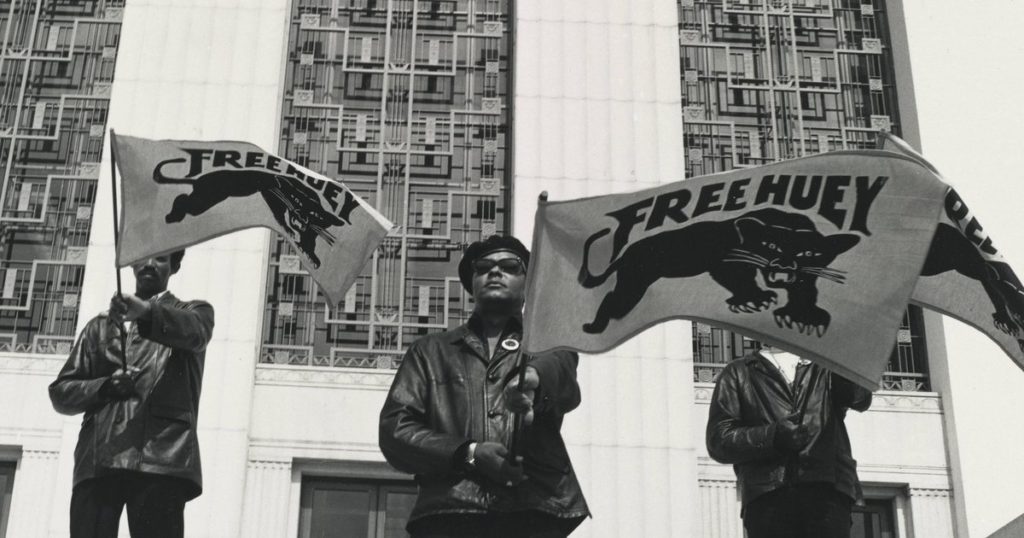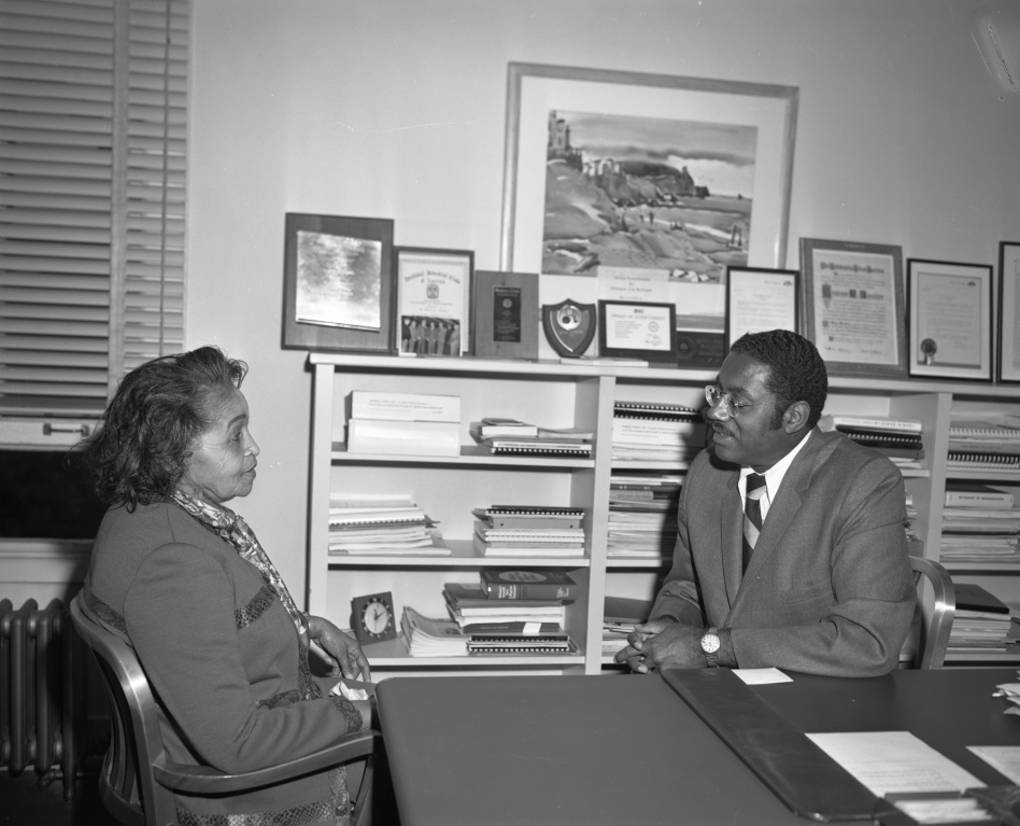Alameda County Courthouse
Tour: Black History (2/10)

Many people know of the Black Panther Party (BPP), but too many don’t know much about the Black Panther Party. It was started in 1966 as the Black Panther Party for Self-Defense by Huey Newton and Bobby Seale, who met at Merritt College, then located in North Oakland at the former University HS. The BPP carried guns and tracked police in response to police harassment and violence against Blacks, wore berets and black leather jackets, and were quickly seen as a threat to the white establishment.
But by 1969, community social programs like Free Breakfast for Children became the core of the BPP. Later still, they also focused on local elections, like Bobby Seale’s 1973 campaign for Oakland mayor. Women played a major role in getting things done in the BPP; by 1969, the Party newspaper officially instructed male Panthers to treat female Party members as equals. Elaine Brown became the first chairwoman of the party in 1974.
The county courthouse steps where you are now became known across the country because of the “Free Huey” protests that occurred here during one of the trials of Huey Newton for the killing of OPD officer John Frey. After the initial manslaughter conviction was overturned and two subsequent trials ended in hung juries, the prosecution decided not to retry Newton. Learn more about the trial and how it changed the legal process in American Justice on Trial: People v. Newton by retired judge Lise Pearlman.
If you turn around and face Lake Merritt, across the lake you’ll see a large building at 1200 Lakeshore. A number of notable people have lived there over the years, including Huey Newton, musician Earl “Fatha” Hines, and more recently Steph Curry of the Golden State Warriors.

Before that side of the lake became part of Oakland in 1872, it was the town of Brooklyn. A woman named Elizabeth Flood moved there in 1855 with her husband Isaac. Elizabeth started a school in their home because their children weren’t allowed in the local schools.
In 1871, Isaac petitioned the Oakland School Board to accept minority children, based on the passage of the Fourteenth and Fifteenth Amendments. In 1872, Brooklyn admitted minorities into its schools, and shortly after, the Oakland School Board voted to accept them as well. Integrated schools didn’t become the law in California until 1880. The Floods’ daughter Lydia was the first Black student to attend John Swett School, and Elizabeth and Isaac went on to help found the First African Methodist Episcopal church.
It took a while for the first Black school teacher in Oakland. In 1926, Ida Louise Jackson became the first. She was the only Black teacher until Beth Pierre Wilson was hired 13 years later.
Looking to the right across the channel from the lake to the estuary, you may be able to see a large concrete building beyond the trees. That’s the Paul Robeson Administration Building, once home to the Oakland Unified School District. It’s where the first Black superintendent of OUSD, Marcus Foster, was assassinated. The Symbionese Liberation Army (of Patty Hearst fame) gunned him down with cyanide-tipped bullets, because they believed Dr. Foster supported police in schools, mandatory student IDs, and other “Big Brother”-ish things.
